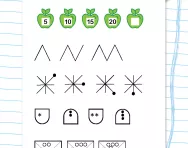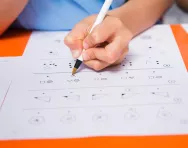Important update from TheSchoolRun
For the past 13 years, TheSchoolRun has been run by a small team of mums working from home, dedicated to providing quality educational resources to primary school parents. Unfortunately, rising supplier costs and falling revenue have made it impossible for us to continue operating, and we’ve had to make the difficult decision to close. The good news: We’ve arranged for another educational provider to take over many of our resources. These will be hosted on a new portal, where the content will be updated and expanded to support your child’s learning.
What this means for subscribers:
- Your subscription is still active, and for now, you can keep using the website as normal — just log in with your usual details to access all our articles and resources*.
- In a few months, all resources will move to the new portal. You’ll continue to have access there until your subscription ends. We’ll send you full details nearer the time.
- As a thank you for your support, we’ll also be sending you 16 primary school eBooks (worth £108.84) to download and keep.
A few changes to be aware of:
- The Learning Journey weekly email has ended, but your child’s plan will still be updated on your dashboard each Monday. Just log in to see the recommended worksheets.
- The 11+ weekly emails have now ended. We sent you all the remaining emails in the series at the end of March — please check your inbox (and spam folder) if you haven’t seen them. You can also follow the full programme here: 11+ Learning Journey.
If you have any questions, please contact us at [email protected]. Thank you for being part of our journey it’s been a privilege to support your family’s learning.
*If you need to reset your password, it will still work as usual. Please check your spam folder if the reset email doesn’t appear in your inbox.
What is the 12+/13+ late transfer test?

After months of preparation, hearing that your child has narrowly missed out on a grammar school place due to their 11+ score can be a huge disappointment. Most children will settle happily into an alternative school and flourish there, but in some cases, there’s a second chance to gain a grammar school place. This is known as the 12+ or 13+ late transfer test.
What is the late transfer test?
The late transfer test is to determine which students are suitable for entry into a grammar school in Year 8 or Year 9. Not all grammar schools have this system, but they might offer a late transfer procedure if:
- They have a pass mark for the 11+ and only admit children who achieve this score, rather than admitting the highest-ranked children until all places are filled. This can leave unfilled places if there are fewer children passing the test than places available.
- There were fewer applicants overall than spaces, so there are no children on the waiting list to fill vacant places.
- A number of children have left the school during the academic year, leaving vacancies.
It’s worth noting that there are usually far fewer places available via the late transfer procedure than in the first round of 11+ admissions – often only a couple per school.
‘There’s no reason why children shouldn’t apply, but it’s important to be realistic about your chances of getting in,’ advises Susan Hamlyn, director of The Good Schools Guide Advice Service.


Prepare your child for Year 7
- English & Maths transition packs
- Practise journalistic writing, figurative language, persuasive text and more
- Revise key maths methods and concepts
Who can take the test?
The late transfer test is intended for children who didn’t gain a school place via the usual 11+ route. This may be because they didn’t reach the required standard, or didn’t take the 11+ in the first place. The theory is that some children perform better with the benefit of an extra 18 months of age, education and preparation time.
Children who move into the area during the school year don’t have to take the late transfer test, but should contact their preferred schools to find out about their vacancies and in-year admission procedures.
What skills are involved?
Different schools have different arrangements for the 12+ and 13+, but typically, children are asked to complete a combination of maths, English, verbal reasoning and non-verbal reasoning tests. These may be written or computer-based tasks.
Some schools use tests commissioned by an external examination provider, such as CEM – which also provides 11+ tests. This is the case in many Buckinghamshire schools, where the pass mark 11+ system means that a number of places are filled each year by the late transfer test. Others write their own papers, or use a combination of in-house and external papers.
Tests are generally taken at a fixed location, which may be the school or another test centre, on a set date.
How to prepare your child
You’ll naturally want your child to have the best chance of 12+ or 13+ success, but is tutoring needed to get them through the test?
This depends in part on their current schooling, says Susan. ‘If a child is coming from an independent school where they’ve had lots of exam practice, you might not feel tutoring is necessary,’ she explains. ‘However, many families, and especially those coming from state schools, do like to bolt on tutoring to give their child some practice in the skills they need and the actual process of completing the papers.’
In addition, grammar schools often provide familiarisation materials to help children get to grips with the exam format and the types of questions they’ll be asked.
To find out about whether your local grammar school has a late transfer procedure and what’s involved, contact the school directly.








